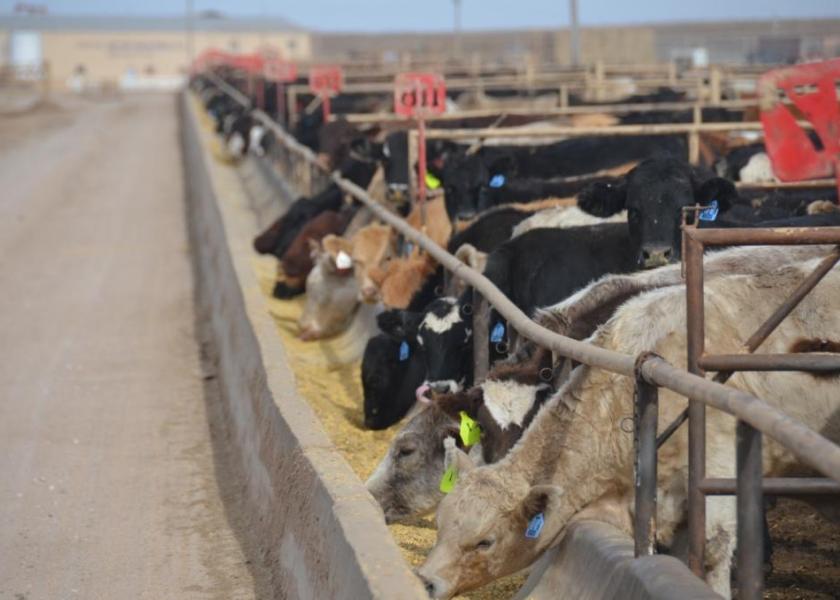Justin Sexten: You Are How You Eat?

Recent food marketing campaigns brought beef cattle diets back to the top of social media discussions. We know the marketing efforts surrounding what cattle eat is certainly not new to the consumer, as a quick trip through any meat case highlights the continual efforts made to differentiate beef as well as the other proteins based on the diet consumed in addition to a host of other management aspects. Beef with a side of adjectives is not limited to the grocery, food service menus are just as descriptive.
We know cattle diets influence end product quality as well as production efficiency. In general, corn-fed cattle produce beef with higher quality grades while grass-fed cattle produce a leaner product. Grain feeding is more efficient than grass finishing due increased energy density and less energy losses associated with fermentation.
In my observation, the debate around methane outside the beef industry fails to recognize methane production represents a loss of energy to fermentation, ranging from 2-12% of the total energy potential of the diet. Wouldn’t most cattlemen consider an alternative production practice that improved energy availability of the diet? The beef industry is constantly evaluating viable opportunities to reduce methane production and capture more of this potential energy, this occurs independent of the politics and marketing surrounding climate change.
There are countless factors beyond diet and fermentation products influencing the efficiency of forage and feed nutrient conversion into muscle and fat. A recent paper in the Journal of Animal Science by Ira Parsons and his Texas A&M co-workers used growing cattle fed a grain-based finishing diet to look at the relationship between feed consumption patterns and feed conversion.
Cattle and the related behaviors were sorted into one of three residual feed intake groups, for ease of reading we will call these efficient, neutral and inefficient and focus on the differences between efficient and inefficient. For context the efficient group consumed 20.3 lbs of dry matter / day and converted at 5.3 while the inefficient group ate 24.2 lbs / day and converted at 6.5.
The efficient steers visited the bunk less often and consumed 1.2 less “meals” each day. In addition to fewer bunk visits, efficient cattle spent less time at the bunk, a total of 11.5 minutes less each day. Spend much time at a feedyard and it doesn’t take long to hear the concern from cattle feeders that low intake cattle don’t perform as well. In this report there were no differences in gain despite lower feed intake and less time spent eating by the efficient cattle.
The authors suggested the comparable gains may be attributed to the efficient cattle having less energy lost as heat due to the combined effects of reduced feed intake and fewer meals. The inefficient cattle may have consumed more total energy but lost more energy as heat due to digestion of larger meals more often.
One assumption we make in feeding experiments is the diet fed and the diet consumed are the same. In this experiment the efficient cattle took 5.6 minutes longer to approach the bunk after the feed truck dropped feed. Perhaps the inefficient cattle consume more roughage after feed delivery leaving more grain for the later arriving efficient cattle? This is one aspect we cannot sort out in a pen feeding experiment, but knowing there are behavioral differences associated with eating, opens up the possibility of individual animal feed consumption preferences.
Another theory suggested to outline how lower feed intake and similar performance was achieved was related to improved “rumen health”. This trial didn’t test rumen pH to monitor digestive health but the experiment did report inefficient cattle having more variable feed consumption patterns.
Combine greater feed intake with variable consumption patterns and the possibility of rumen upset may also increase. No health differences such as bloat or acidosis were reported suggesting the difference in efficiency could have been caused by suboptimal fermentation rather than rumen upset. This research highlights how animal differences in feed intake patterns may affect performance and serves as a reminder to feeders that we should work to ensure consistency in feed mixing and delivery so we do not compound these challenges.
The knowledge base around feeding behavior and the relationships to performance and efficiency continues to expand. As technology advances, our ability to monitor behavior in a normal feeding environment will help determine if efficiency causes the behavior or the behavior makes cattle more efficient. Further discoveries looking at what and how cattle eat will offer cattlemen selection and management opportunities to improve efficiency.







